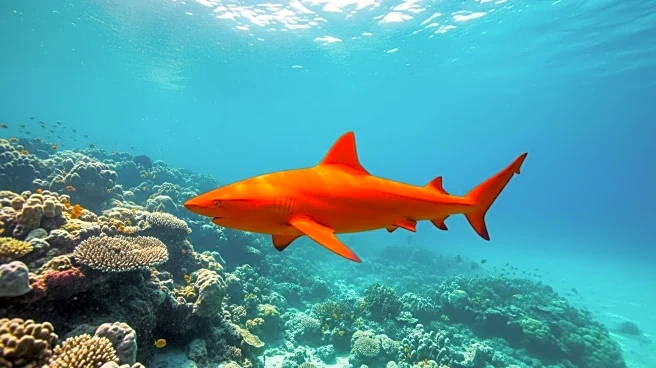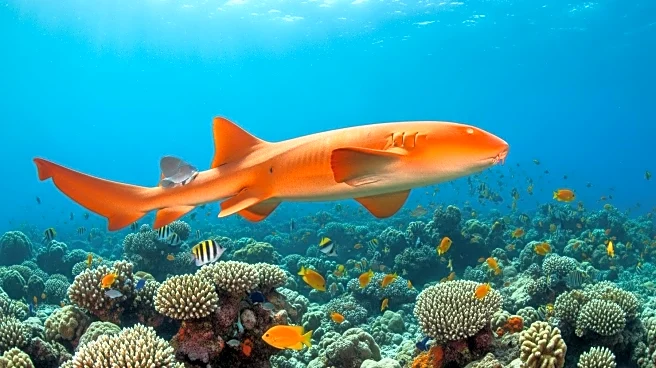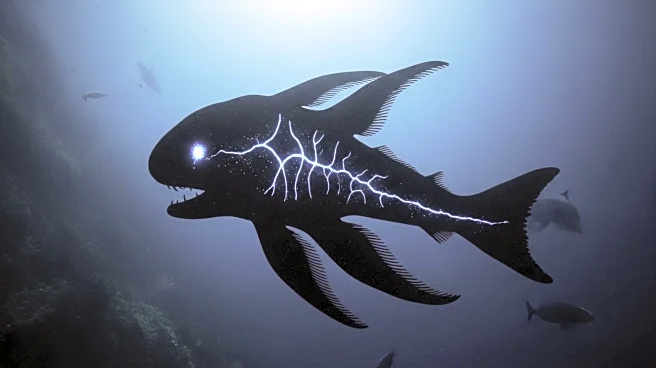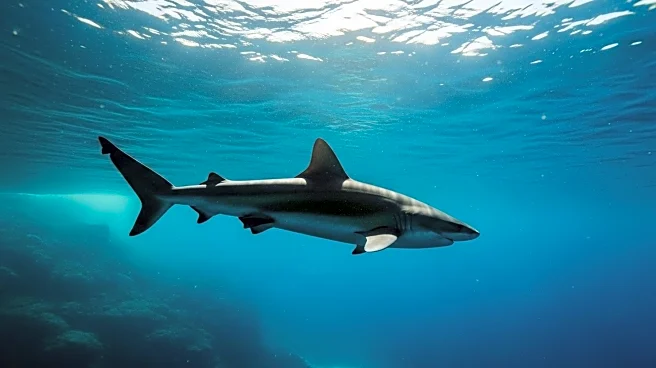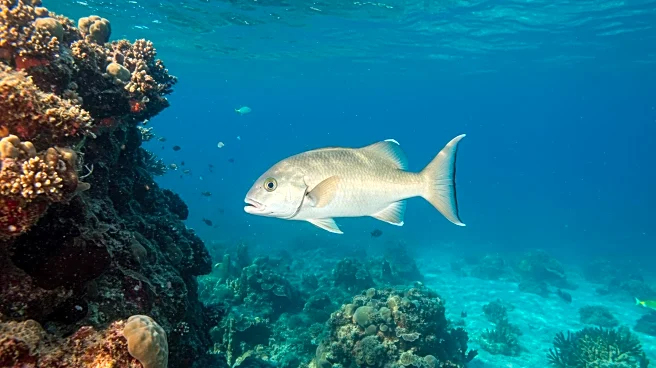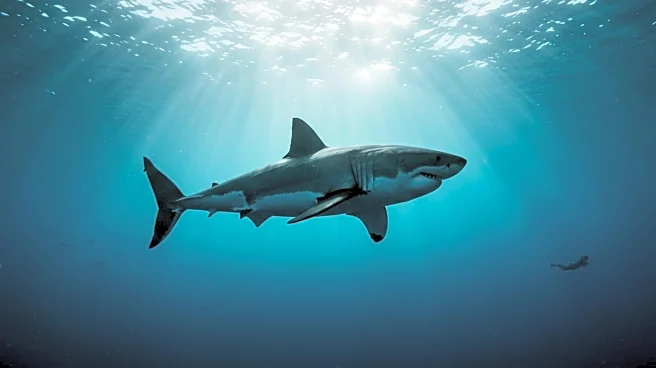What's Happening?
Scientists have discovered a unique bright orange nurse shark in Costa Rica's Tortuguero National Park. This shark's unusual pigmentation is attributed to two rare genetic conditions: xanthism and albinism. Xanthism causes a loss of darker pigmentation, making lighter colors like orange and yellow more prominent, while albinism reduces melanin production, resulting in stark white features. The shark's eyes are described as pasty white with no visible irises. This discovery, documented in the Marine Biodiversity journal, marks the first recorded instance of an orange shark. Researchers photographed the shark before releasing it back into the wild, noting that environmental factors such as inbreeding, stress, and hormonal imbalances might have contributed to its vibrant hue.
Why It's Important?
The discovery of the orange nurse shark is significant as it provides insights into genetic variations and their impact on marine life. Understanding these genetic conditions can help scientists study biodiversity and adaptation in marine ecosystems. The shark's survival to adulthood, despite its lack of camouflage, suggests resilience and adaptability, which are crucial for species facing environmental changes. This finding also raises awareness about genetic anomalies in wildlife, potentially influencing conservation strategies and scientific research on genetic diversity.
What's Next?
Further research may be conducted to explore the genetic makeup of the orange shark and similar anomalies in other marine species. Scientists might investigate the environmental factors contributing to such genetic conditions, which could lead to broader studies on marine biodiversity and conservation efforts. The discovery could also prompt discussions on the impact of genetic diversity on species survival and adaptation in changing environments.
Beyond the Headlines
The presence of genetic conditions like xanthism and albinism in marine life opens discussions on the ethical considerations of genetic research and conservation. It highlights the importance of preserving genetic diversity to maintain ecosystem balance. Additionally, the discovery may influence cultural perceptions of marine life, emphasizing the beauty and uniqueness of genetic variations.
